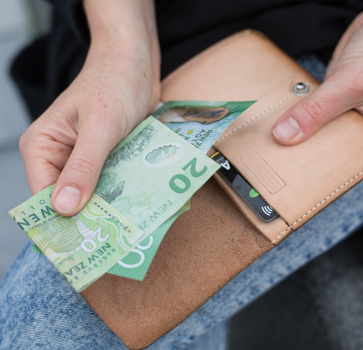When you can’t pay your debts: Bankruptcy and other options
Bankruptcy
What is bankruptcy?
Insolvency Act 2006, s 7, Parts 2-4
Bankruptcy is a way of dealing with debts that you cannot pay. It clears most of your debts (meaning you no longer have to pay them).
But, the Official Assignee will take control of everything you own and will sell most of it (subject to some limitations) to pay back the people or organisations you owe money to (your “creditors”). You’ll also be subject to a number of restrictions, some which can last for many years. For more information about these restrictions and limitations, see: “What are the disadvantages of bankruptcy?” below.
How does a person become bankrupt?
Insolvency Act 2006, ss 10–13, 45, 46
If you have debts of $1,000 or more, you can apply for your own bankruptcy. You can apply for bankruptcy on the New Zealand Insolvency and Trustee Service website.
If you owe someone $1,000 or more and you have failed to pay them, they can apply to the High Court for you to be made bankrupt. For this to happen you must do what is known as an “act of bankruptcy”.
An act of bankruptcy includes, for example, the following situation:
- where someone gets a court judgment for the debt (see: “How debts are recovered through the courts?”), and
- after getting the judgment, the person serves a bankruptcy notice on you. A bankruptcy notice gives you 10 working days to either pay the debt or to apply to the High Court to set aside the bankruptcy notice. If you don’t do either, you’ll have committed an act of bankruptcy and the creditor can apply to have you be made bankrupt.
What are the advantages of bankruptcy?
Most of your unsecured debts, including any student loan balance, are wiped, and proceedings against you to recover those debts are halted.
What are the disadvantages of bankruptcy?
Insolvency Act 2006, ss 62, 101, 138, 147, 149, 158, 164, 194, 204, 211–212, 419–439, 433(1)(f)
As a bankrupt person, you can only keep limited assets, that is:
- essential personal and household items (like your furniture and clothing)
- tools for work
- a motor vehicle up to the value of $6,500
- money up to $1,300.
As a bankrupt person, you still have to pay certain debts, including court fines, child support and debts with secured creditors. You can also be required to make periodic payments to the Official Assignee (for example, out of your wages) as a contribution towards payment of your debts.
In certain situations, if you gifted an asset or sold it for less than what it was worth to someone else in the two years before you became bankrupt, the Official Assignee might be able to take those assets back.
As a bankrupt person, you cannot get credit, borrow money, or enter into a hire purchase agreement for more than $1,000 without first informing the credit provider that you are bankrupt.
Without first getting the permission of the Official Assignee, you also can’t:
- run a business
- be employed by a relative or an entity controlled by a relative
- leave New Zealand.
You also need to inform the Official Assignee about certain things, like if you win a prize or receive an inheritance.
There are also a number of special offences that apply only to bankrupt people. For example, it is a criminal offence for a bankrupt person to:
- get into debts when they don’t expect they will be able to pay it, or
- gamble or live in an extravagant way that increases their bankruptcy, or
- break any of the rules of bankruptcy or make false statements to the Official Assignee.
The names of bankrupt people are published in their local newspaper and the New Zealand Gazette, and they are also recorded on a public register on the Insolvency and Trustee Service website.
How long does bankruptcy last?
You are usually discharged from bankruptcy automatically after three years.

